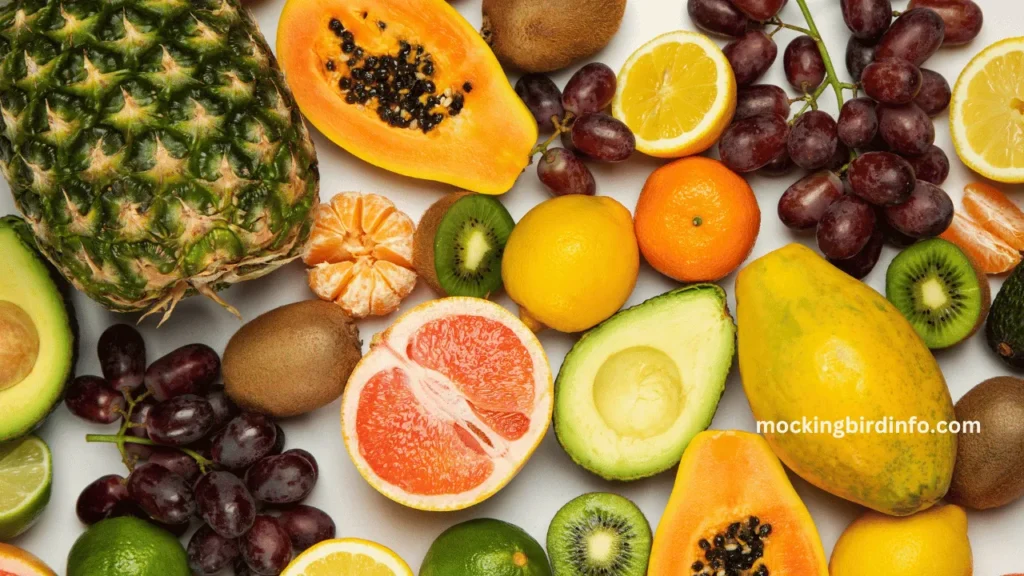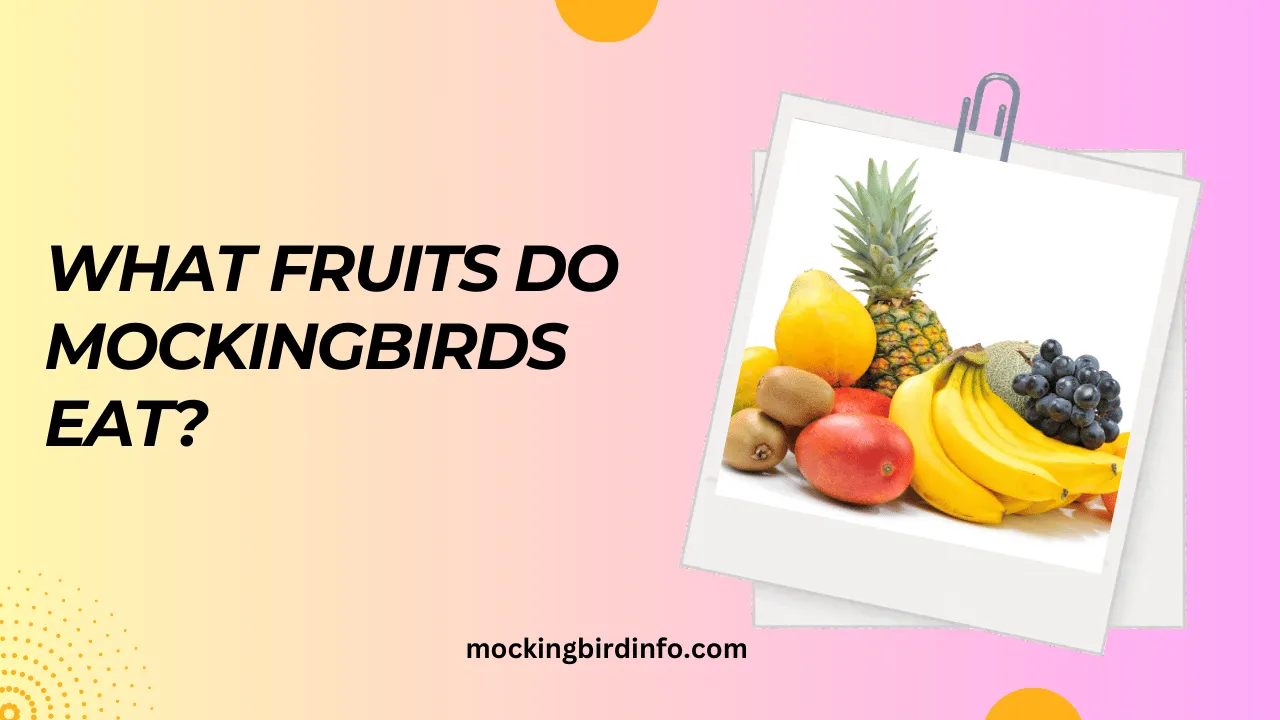Have you ever watched a mockingbird perched gracefully in your garden, pecking at berries with determination? These talented birds, known for their extraordinary vocal mimicry, have a surprisingly diverse diet that many people overlook.
While mockingbirds often captivate us with their songs, their feeding habits tell an equally intriguing story about their role in local ecosystems and how they adapt to their surroundings.
Why is this important to know? Understanding what fruits mockingbirds eat can help homeowners and gardeners cultivate bird-friendly environments while also offering insights into protecting valuable crops.
Mockingbirds are more than backyard guests; they are essential contributors to seed dispersal and the growth of various plant species. This balance between wildlife and plant life highlights the complex relationships in nature that ensure the survival of both birds and the vegetation they rely on.
This blog post will delve into what fruits mockingbirds enjoy, the factors influencing their choices, the role these fruits play in their diet, and their broader environmental impact. Whether you’re an avid gardener, a bird enthusiast, or simply curious, you’ll gain a better understanding of how these birds’ feeding habits intersect with the ecosystems around us.

Contents
Factors Influencing Fruit Preferences
1. Seasonal Availability
One of the most significant factors affecting the types of fruits mockingbirds eat is seasonal availability. In the warm months of spring and summer, mockingbirds often feast on fruits like mulberries, elderberries, and blackberries, which grow abundantly during this period.
As the seasons shift to fall, their preferences change to include persimmons, wild grapes, and sumac berries. The availability of these fruits diminishes in winter, pushing the birds to seek out heartier, less perishable options like holly and juniper berries. This adaptability helps them thrive year-round, even when food sources become scarce.
2. Nutritional Value
The nutritional content of fruits plays a critical role in a mockingbird’s diet. Fruits rich in sugars and carbohydrates are favored for their quick energy, especially during times of increased activity, such as during breeding seasons or when establishing territories.
Berries like blueberries and blackberries offer antioxidants and essential vitamins, contributing to better health and stronger immunity. This nutrient boost is vital for maintaining their vocal and physical stamina, which is a cornerstone of their mating and territorial behaviors.
3. Size and Shape
Mockingbirds are drawn to fruits that are easy to handle and swallow. They often prefer small, round berries that fit comfortably in their beaks and can be ingested without much effort.
For larger fruits, mockingbirds may peck at the flesh to consume the softer inner parts, which are easier to eat. This behavior allows them to feed on fruits like peaches or plums when they ripen, although they might only take small bites.
4. Color
Color is a surprisingly important factor in a mockingbird’s fruit selection. Brightly colored fruits like red, blue, and purple tend to attract their attention. The vibrant colors often signal ripeness and high sugar content, making them more appealing.
For example, cherries, strawberries, and blueberries often catch the eye of a foraging mockingbird. This preference for colorful fruits ties back to their instinct to seek out nutritious and energy-rich food sources.
The Role of Fruit in the Mockingbird’s Diet
1. Energy Source
Fruits serve as a primary source of quick energy for mockingbirds, especially during high-energy periods such as mating and raising young. These birds are highly active, darting from branch to branch, singing complex tunes to defend their territory.
The natural sugars found in fruits like mulberries and elderberries provide the fuel they need to sustain such levels of activity, helping them keep up with their daily routines.
2. Hydration
Mockingbirds benefit from the juicy nature of fruits, which provide a vital source of hydration, particularly during periods of limited rainfall. When water sources are less accessible, fruits like grapes and strawberries help them stay hydrated, reducing their dependence on standing water.
This water intake is essential not only for survival but also for maintaining energy levels and proper bodily function.
3. Nutrient Supplement
Fruits offer more than just energy and hydration; they provide essential vitamins and minerals that support the bird’s overall health. For instance, vitamin C, present in certain fruits, boosts their immune systems, while antioxidants contribute to better feather health and disease resistance.
These nutrient-dense foods help maintain a balanced diet and support vital functions such as reproduction and molting.

Seed Dispersal and Ecosystem Impact
1. Seed Selection
Mockingbirds do not consume all types of fruits indiscriminately; they often select fruits with ripe and viable seeds. This behavior not only meets their dietary needs but also plays a crucial role in promoting plant growth.
By choosing ripe fruits, mockingbirds ensure that they are consuming seeds that can potentially sprout after being dispersed, aiding in plant reproduction.
2. Seed Digestion and Dispersal
The digestive process of a mockingbird helps in breaking down the fruit’s flesh while leaving the seeds largely intact. When the bird excretes the seeds, they are often deposited far from the parent plant, giving these seeds a better chance to germinate in a new location.
This process supports plant diversity and helps maintain a healthy, balanced ecosystem. The role of mockingbirds in seed dispersal is essential for the regeneration of fruit-bearing plants and the sustainability of their habitats.
3. Impact on Plant Reproduction
By dispersing seeds across different areas, mockingbirds help ensure the continued growth and reproduction of plant species. This seed dispersal is particularly beneficial in fragmented or disturbed habitats, where plant growth might otherwise be limited.
Through their foraging and feeding activities, mockingbirds contribute to a chain reaction that supports other wildlife by promoting habitats rich in diverse plant life.
Human-Bird Interactions and Fruit Consumption
1. Ornamental Plants
Mockingbirds can sometimes be a nuisance for homeowners who grow ornamental fruit-bearing plants like cherries and berries. Their natural behavior of pecking and feeding can result in stripped bushes and bare fruit branches.
However, this behavior also emphasizes their role in local seed dispersal, indirectly contributing to the health of nearby vegetation.
2. Agricultural Crops
For farmers, mockingbirds can be both a blessing and a challenge. While they help control insect populations that can harm crops, they are also known to feed on fruit crops like grapes and blueberries, causing potential damage and loss.
Balancing agricultural needs with wildlife conservation efforts involves using non-lethal deterrents like reflective tape or netting to keep birds away from valuable fruit.
3. Bird-Friendly Landscaping
To encourage the presence of mockingbirds without impacting crops or garden aesthetics, homeowners can design bird-friendly landscapes that include native fruiting plants.
Planting shrubs like serviceberry, elderberry, and mulberry can provide a natural food source that attracts these birds. By creating a harmonious environment that caters to both human and bird needs, gardeners can support local bird populations while protecting their plants.
Conclusion
Mockingbirds are more than just talented songbirds; they play a critical role in maintaining healthy ecosystems through their fruit-eating habits. By consuming a variety of fruits, they support their energy needs, stay hydrated, and receive essential nutrients that keep them healthy.
Their role as seed dispersers promotes plant reproduction and contributes to a balanced ecosystem, highlighting the interconnectedness of nature. To protect these birds and the benefits they bring, it’s important to maintain habitats rich in fruit-bearing plants.
This practice not only ensures the survival of mockingbirds but also supports broader ecological diversity. Embracing their presence in your garden or community can foster a more vibrant natural world where both birds and plants thrive.
FAQs
1. What fruits do mockingbirds prefer most?
Mockingbirds often prefer fruits like mulberries, elderberries, and blackberries, along with cherries and blueberries, due to their high sugar content and bright colors.
2. Do mockingbirds eat fruits in winter?
Yes, they eat fruits like holly and juniper berries during winter when other options are limited, helping them survive through colder months.
3. Why do mockingbirds eat fruits?
Fruits provide essential energy, hydration, and nutrients that support their active behavior, singing, and breeding activities.
4. How do mockingbirds contribute to seed dispersal?
Mockingbirds digest the fruit flesh and excrete the seeds, which helps spread them to new areas, aiding plant growth and reproduction.
5. Are mockingbirds harmful to gardens?
While they can feed on ornamental plants, their role in pest control and seed dispersal can be beneficial to gardens in the long run.
6. What type of fruit attracts mockingbirds the most?
Fruits that are small, colorful, and juicy, such as blueberries, cherries, and blackberries, attract mockingbirds due to their manageable size and high energy content.








